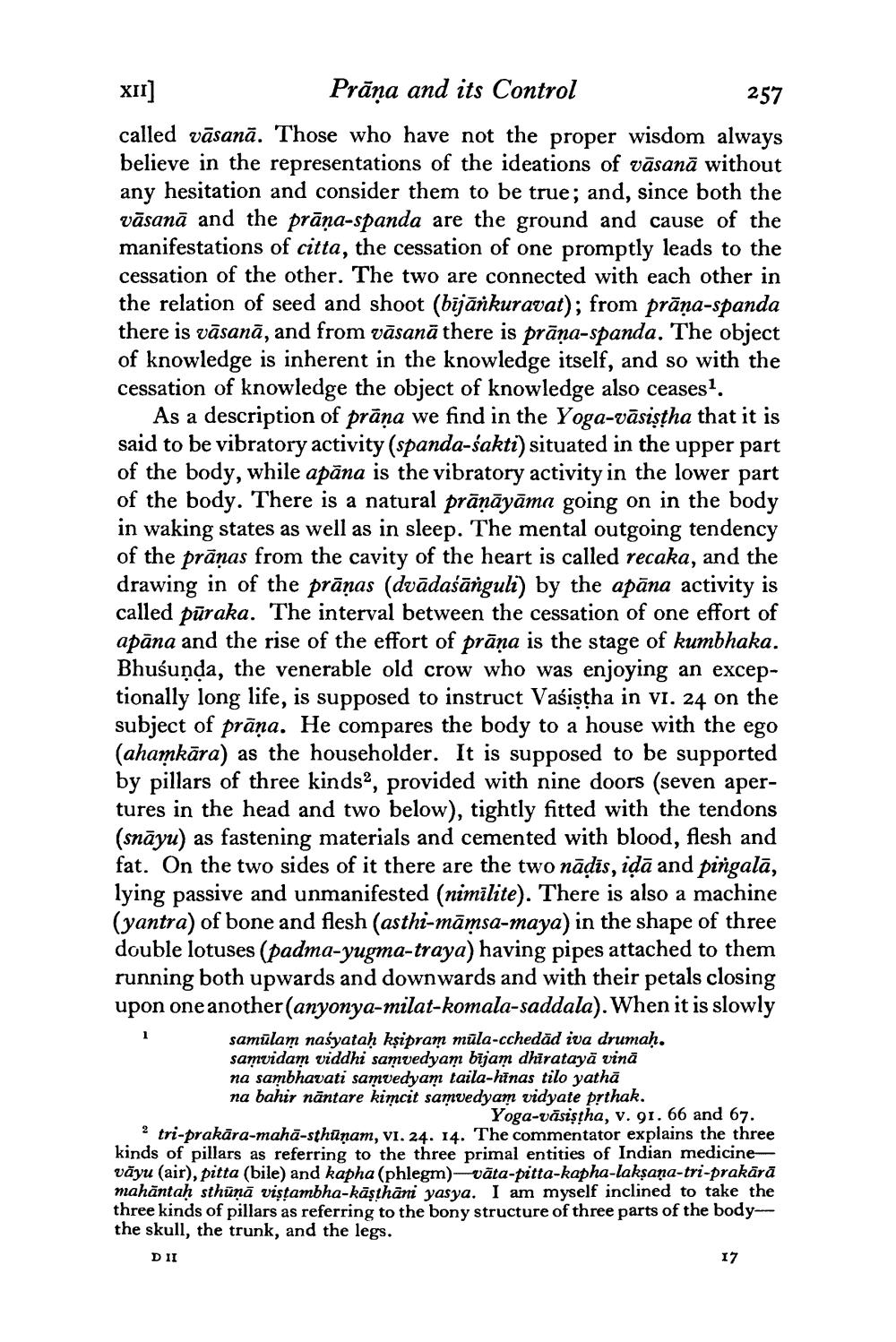________________
XII] Prāna and its Control
257 called vāsanā. Those who have not the proper wisdom always believe in the representations of the ideations of vāsanā without any hesitation and consider them to be true; and, since both the vāsanā and the prāna-spanda are the ground and cause of the manifestations of citta, the cessation of one promptly leads to the cessation of the other. The two are connected with each other in the relation of seed and shoot (bijānkuravat); from präna-spanda there is vāsanā, and from vāsanā there is prāņa-spanda. The object of knowledge is inherent in the knowledge itself, and so with the cessation of knowledge the object of knowledge also ceases.
As a description of prāņa we find in the Yoga-vāsiştha that it is said to be vibratory activity (spanda-sakti) situated in the upper part of the body, while apāna is the vibratory activity in the lower part of the body. There is a natural prānāyāma going on in the body in waking states as well as in sleep. The mental outgoing tendency of the prānas from the cavity of the heart is called recaka, and the drawing in of the prāņas (dvādaśānguli) by the apāna activity is called pūraka. The interval between the cessation of one effort of apāna and the rise of the effort of prāna is the stage of kumbhaka. Bhuśunda, the venerable old crow who was enjoying an exceptionally long life, is supposed to instruct Vaśiştha in vi. 24 on the subject of prāņa. He compares the body to a house with the ego (ahamkāra) as the householder. It is supposed to be supported by pillars of three kinds, provided with nine doors (seven apertures in the head and two below), tightly fitted with the tendons (snāyu) as fastening materials and cemented with blood, flesh and fat. On the two sides of it there are the two nādīs, idā and pingalā, lying passive and unmanifested (nimilite). There is also a machine (yantra) of bone and flesh (asthi-māmsa-maya) in the shape of three double lotuses (padma-yugma-traya) having pipes attached to them running both upwards and downwards and with their petals closing upon one another (anyonya-milat-komala-saddala). When it is slowly
samūlam naśyataḥ kṣipram mūla-cchedad iva drumah. samvidam viddhi samvedyam bijam dhiratayā vină na sambhavati samvedyam taila-hinas tilo yathā na bahir nāntare kimcit samvedyam vidyate prthak.
Yoga-vāsiştha, v. 91. 66 and 67. 2 tri-prakāra-mahā-sthūnam, vi. 24. 14. The commentator explains the three kinds of pillars as referring to the three primal entities of Indian medicine vāyu (air), pitta (bile) and kapha (phlegm)-vāta-pitta-kapha-laksana-tri-prakārā mahāntah sthüņā vistambha-kāşthāni yasya. I am myself inclined to take the three kinds of pillars as referring to the bony structure of three parts of the bodythe skull, the trunk, and the legs.
DII




